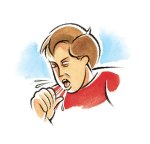7 Surprising Triggers of Lung Trouble
 Airborne irritants—both outdoors and indoors—can aggravate or even cause asthma, a respiratory condition characterized by a chronic cough or wheezing.
Airborne irritants—both outdoors and indoors—can aggravate or even cause asthma, a respiratory condition characterized by a chronic cough or wheezing.
Common pollutants, such as traffic exhaust and secondhand smoke, are well-known causes of lung problems, including asthma.
But there are a number of other irritants—some of them found in your home or car—that can also trigger asthma symptoms.
Fireworks
Over the years there have been scattered reports of fireworks causing asthma attacks. In one especially chilling incident, detailed in 2000 in Annals of Allergy, Asthma & Immunology, a 9-year-old girl with moderate asthma suffered a severe asthma attack and died after playing with sparklers at a Fourth of July picnic.
When lit, Roman candles, bottle rockets, sparklers, and other fireworks release numerous chemicals, including sulfur dioxide, which can exacerbate asthma when inhaled in concentrated amounts.
In large-scale firework displays, even the smoky fallout, which contains barium aerosols, could potentially exacerbate asthma, a 2008 study suggested.
Airbags
Asthmatics who stay in their car after a crash have been known to experience asthma attacks. One might chalk this up to stress, but something else is to blame: the aerosol compounds that are released into the cabin when an airbag inflates.
A group of researchers at General Motors confirmed this effect in the mid-1990s. Two dozen asthmatics each sat for 20 minutes in the backseat of an airtight car after an airbag was deployed, and 10 of them had significant reactions in their lung passages.
When the latter group underwent the same test wearing an air-filter mask, however, they did not.
Flour
When inhaled in large quantities, flour dust can irritate the lungs, so much so that experts have coined a term for it: baker’s asthma.
Surprisingly, this is among the most common forms of workplace-related asthma.
Many professional bakers who develop asthma are allergic to wheat flour (or other inhalable ingredients).
But studies have shown that even bakers who aren’t allergic can develop the condition, which suggests that, over time, flour dust itself may compromise lung function.
Gas appliances
Nitrogen dioxide (NO2), a byproduct released by gas appliances, has been linked to asthma symptoms in children.
A 2008 study followed 150 asthmatic children in Baltimore over a six-month period; it found that children who lived in homes with higher levels of NO2 had more frequent wheezing, coughing, and chest tightness. (Most studies in adults have failed to find a similar effect.)
NO2 can aggravate asthma even in the relatively small amounts generated by gas stoves, heaters, and fireplaces. Properly venting appliances can help avoid unsafe NO2 levels, experts say.
There are 3 more, CLICK HERE to see.
Source: http://www.health.com
- Tags: Health Care Safety
- Professional Medical














Comments 0